How to: bullet journal
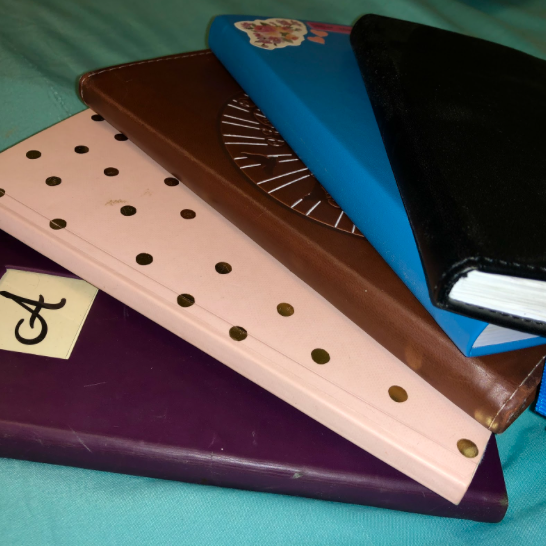
A bullet journal is a personalized planner created from a blank notebook used to maintain daily organization and keep track of daily, weekly, and monthly tasks and notices.
To-do lists. Shopping lists. Homework. Tests. Quizzes. Projects. Finals. Teacher meetings. Clubs. Sports. Drama. Work. Birthdays. Relationships. Reminders. The DMV. Doctors appointments. The Orthodontist. Family events. Football games.
The modern pupil has more than his or her fair share of keeping track of tasks and events, and in the digital age, most students resort to online calendars, reminder apps, and the traditional method of memory to keep organized. With the new school year beginning, many high schools students struggle to keep their busy lives manageable.
However, the old-fashioned pen-and-paper organizational method has manifested recently into a new and unique form — the bullet journal.
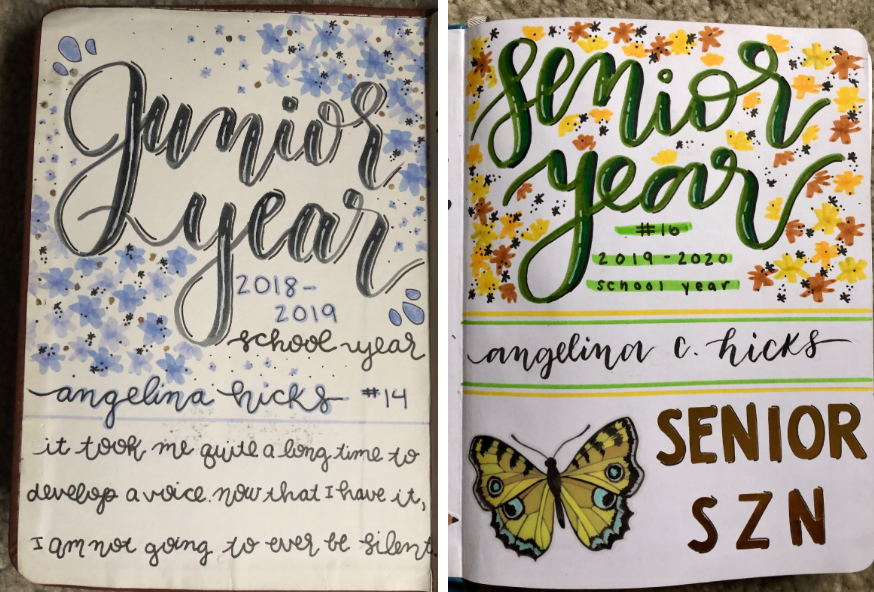
What is a bullet journal?
Ryder Carroll, a digital product designer and author living in Brooklyn, New York, created the bullet journal as a new, innovative method to increase productivity and organization. The bullet journal method is a methodology designed to help organize past, present, and future events and maintain reasoning and motivation, according to bulletjournal.com, Carroll’s official bullet journal website.
A bullet journal, a personalized planner created from a blank notebook, can be used to maintain organization and keep track of daily, weekly, and monthly tasks. Bullet journals, made to be 100% customizable, capitalize on individual needs in order to create a cohesive method of organization not found in traditional, store-bought planners. Carroll also created a bullet journal introductory video, titled How to Bullet Journal.
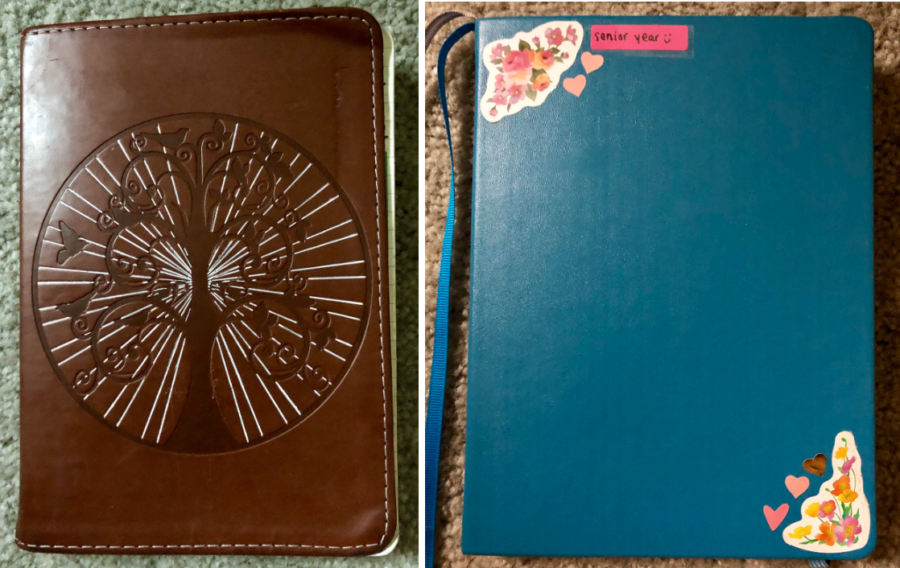
How to get started
Most students struggle with one thing — organization. Having a bullet journal can help keep ideas in line, due dates easy to check, and events perfectly coordinated. Although many Cathedral Catholic High School students rely on Schoology to keep track of their schoolwork, keeping all homework assignments, tasks, and events in one easy-to-reference planner helps improve time management and accountability. A blank, gridded, or dotted notebook gives students limitless possibilities to brainstorm methods that work for individual needs.
Future log
A future log is a year-at-a-glance calendar with future events, goals, projects, travel plans, birthdays, holidays, and other noteworthy events in the far future. Creating a future log can create a space to write down future events as to not forget them in the hustle and bustle of everyday life.
For Cathedral Catholic High School students: Use the future log to note retreat dates, religious holidays/seasons, the beginning and end of semesters, the dates for holiday breaks, service trip dates, honor society project dates and events, and large reminders for throughout the year
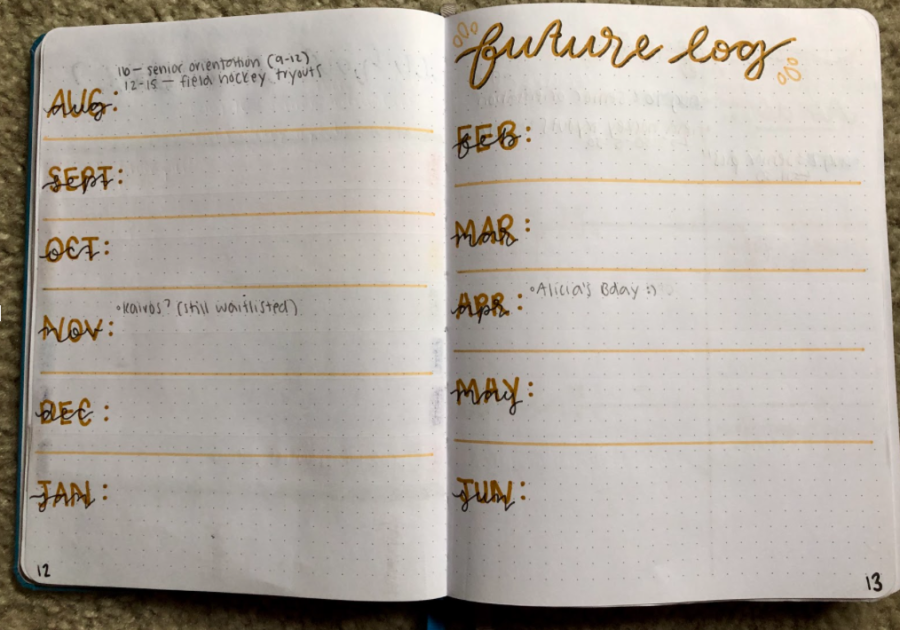
Monthly spreads
A calendar can create a minimal overview for the month ahead. Used to quickly schedule events and tasks, this spread can be utilized to take a monthly mental inventory and write down any reminders, priorities, and significant thoughts down in preparation for the upcoming month.
For CCHS students: Write down Mass dates, tests, project due dates, sports games, play showings, assemblies, early dismissal, and more events to give an overview of the next month.
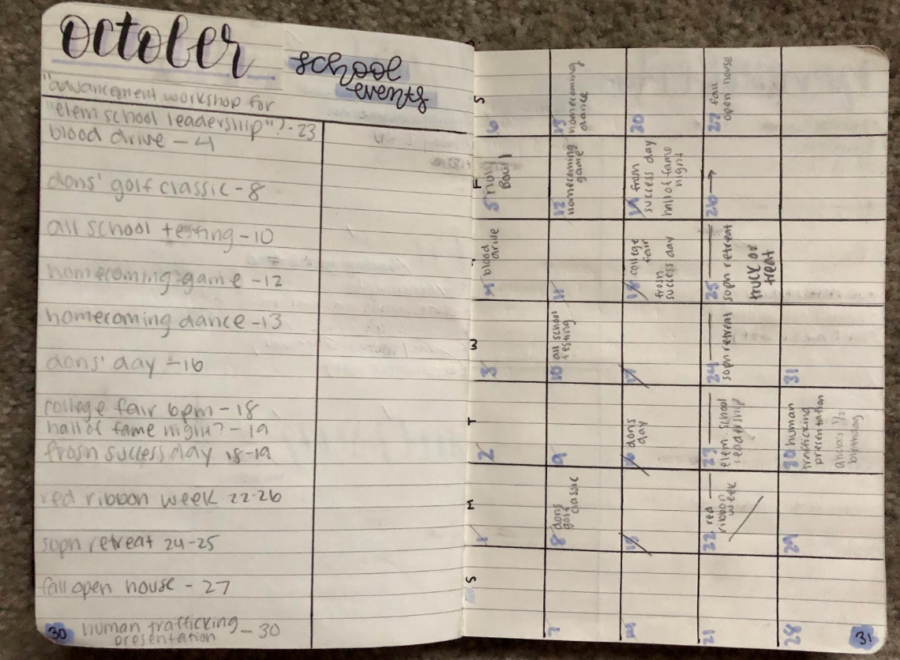
Weekly spreads
Creating to-do lists, calendars, and more can help the modern student maintain a standard of organization. The most productive method for day-to-day organization is creating weekly spreads. By putting one week on a two-page spread, a student can keep track of specific homework assignments, tests, lunch meetings, sports games, and any other important events in a easy-to-access, cohesive system.
For CCHS students: Take thorough note of specific homework assignments, teacher meetings, doctor’s appointments, emails to send or respond to, and other reminders of small tasks to be completed throughout the week. A class-specific color coding system for class assignments also can improve organization and create a break from the harsh black pen and white paper combination.
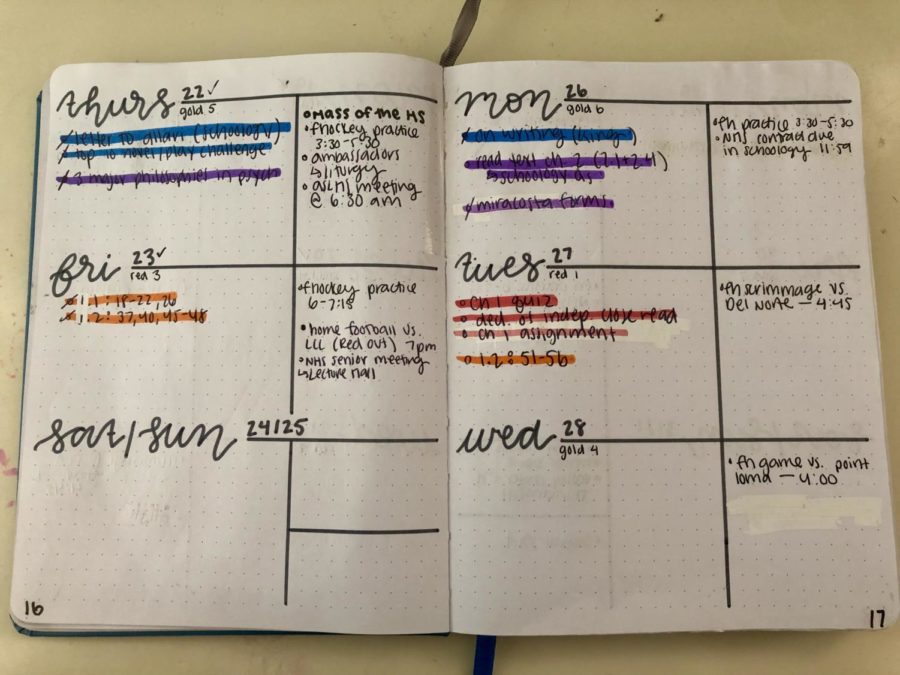
Benefits
Bullet journaling inspires productivity by promoting a sense of accomplishment when completing a to-do list. Bullet journaling also provides a single place to write down everything that matters, which encourages peace of mind, according to lifehack.org.
Bullet journaling for mindfulness
According to Istu Septania’s article in The Jakarta Post, practitioners report that bullet journalism helps people achieve a greater sense of mindfulness. Writing out to-do lists and reflective journal entries can reduce stress levels, as journaling is a common therapeutic practice in psychology and can be used to overcome emotional exhaustion.
Try scrapbooking
After creating a sufficient organizational method, a bullet journal can also double as a method of scrapbooking. Collecting small, flat objects can create pages full of memories and nostalgia. Whether in a second journal separate from work and school or all in the same notebook, memory-keeping can create great visual tools to store memories for years to come. Printing pictures from a handheld Bluetooth printer, like the HP Sprocket or Prynt Pocket, adds a personalized touch to make each bullet journal unique and special.
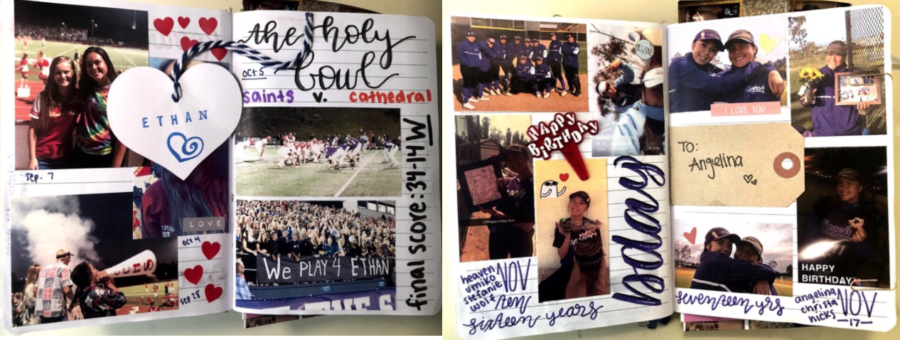
Be creative
Inserting pieces of art or even pressed flowers and leaves can add a unique touch in a bullet journal. Experimenting with different types of media creates an outlet for artistic tendencies and adds another layer of creativity and expression found outside standard bullet journals. Although not recommended for first-time bullet journal-ers, once one has mastered the art of monthly calendars and organized weekly layouts, adding artistic elements can make journaling fun and therapeutic for the creative side of the brain.
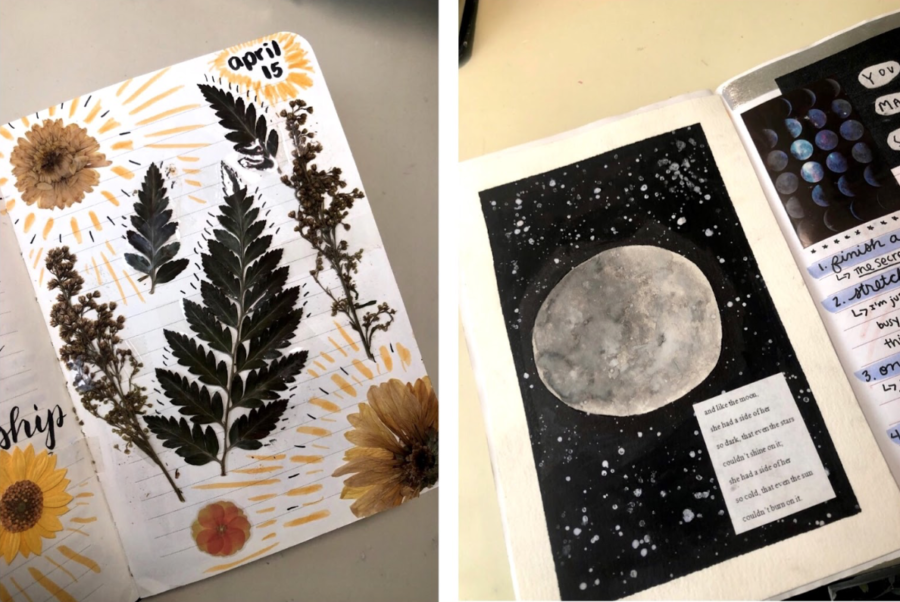

During my third school year on the El Cid staff, this time honored with the title of Managing Editor, I plan to spend every moment not only striving to...





















































